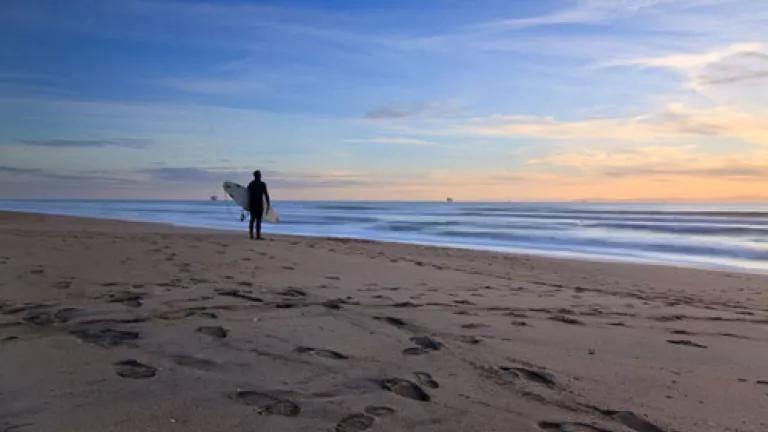
When I travel for work--NRDC has offices across the country--I like to try to get out and take a swim. It's a nice break from suing polluters. But I'm always wondering: How clean is that beach in Santa Monica? Can I safely swim in Lake Michigan, in sight of the Chicago skyline? Even back home in New York, I find myself wondering if it's really a good idea to go swimming right after a rain.
Bolsa Chica State Beach in Orange County, CA, was awarded "5 star" status by NRDC's Testing the Waters beach report. (Photo: Will Hastings, via Flickr)
I know I'm not the only one who wonders if my beach is clean and safe for swimming. Millions of Americans get sick every year--with stomach flu, pinkeye, meningitis, and other illnesses--after swimming in polluted water at beaches, lakes and ponds across the country. According to the CDC, the number of these infections has increased steadily over the past few decades. While some "five-star" beaches have consistently good water quality, carefully monitor pollution, and inform the public when it's too risky to swim, others have persistent contamination problems, according to Testing the Waters, NRDC's annual report on beachwater pollution.
You can check the water quality of your favorite beach by zipcode on our searchable map. Find out which beaches do a good job of monitoring pollution, and which ones you might want to avoid if you're planning a trip to the waterfront.
Ultimately, though, if we want to be able to go the beach without getting sick, we need to control the fastest-growing source of water pollution in the country--stormwater runoff. In many parts of the country, just a small amount of rainfall can trigger an overflow of sewage into the nearest water body. According to NRDC's report, more than two-thirds of beach closings and advisories last year were issued because bacteria levels in beachwater exceeded public health standards, indicating the presence of human or animal waste in the water.
The EPA estimates that about 10 trillion gallons of untreated stormwater--contaminated with sewage, motor oil, garbage, animal waste and other pollution, flows into lakes, rivers, ponds and oceans every year. Some cities like New York and Philadelphia are leading the way in curbing stormwater pollution with an innovative approach called green infrastructure, which seeks to naturally absorb rainwater where it falls. By investing in building out tools like porous pavement, green roofs, streetside plantings, parks and rain barrels, these cities are improving water quality while also making neighborhoods greener, healthier, and more pleasant.
For millions of Americans, a trip to the beach is a summertime ritual. It's also a major revenue generator for billion-dollar coastal economies that support millions of American jobs. By encouraging the expansion of innovative solutions like green infrastructure, and strengthening standards for recreational water quality, we can protect swimmers, keep economies strong, and help ensure that a trip to the beach is as carefree as a summer day.